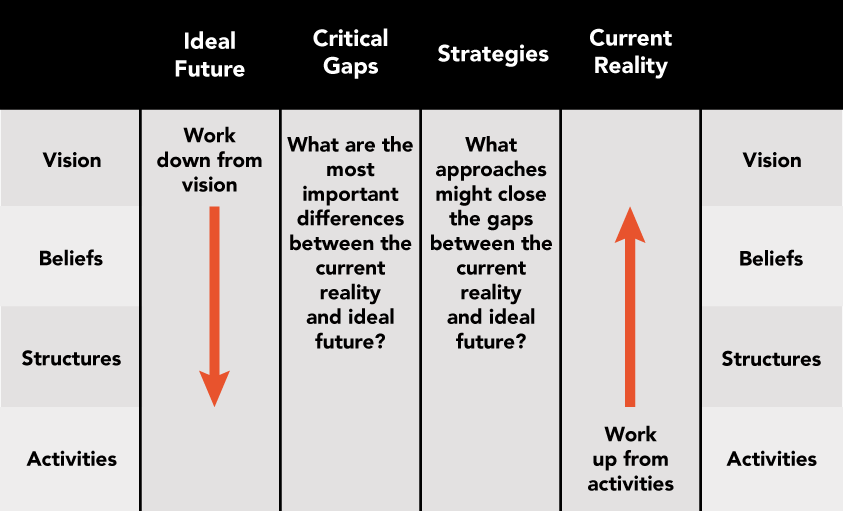The Now vs. Future tool can help stakeholder groups specify their visions, explore what those visions would entail, and identify action steps to move toward them.
The tool is adapted from the Vision Deployment Matrix, a systems thinking tool developed by Daniel Kim.

The purpose of this section is to build understanding of shared aspirations and to surface what would have to be in place to bring that vision forth and uphold it.
The purpose of this section is to build understanding of what is in place today and surface the unstated beliefs and guiding ideas that uphold current reality.

